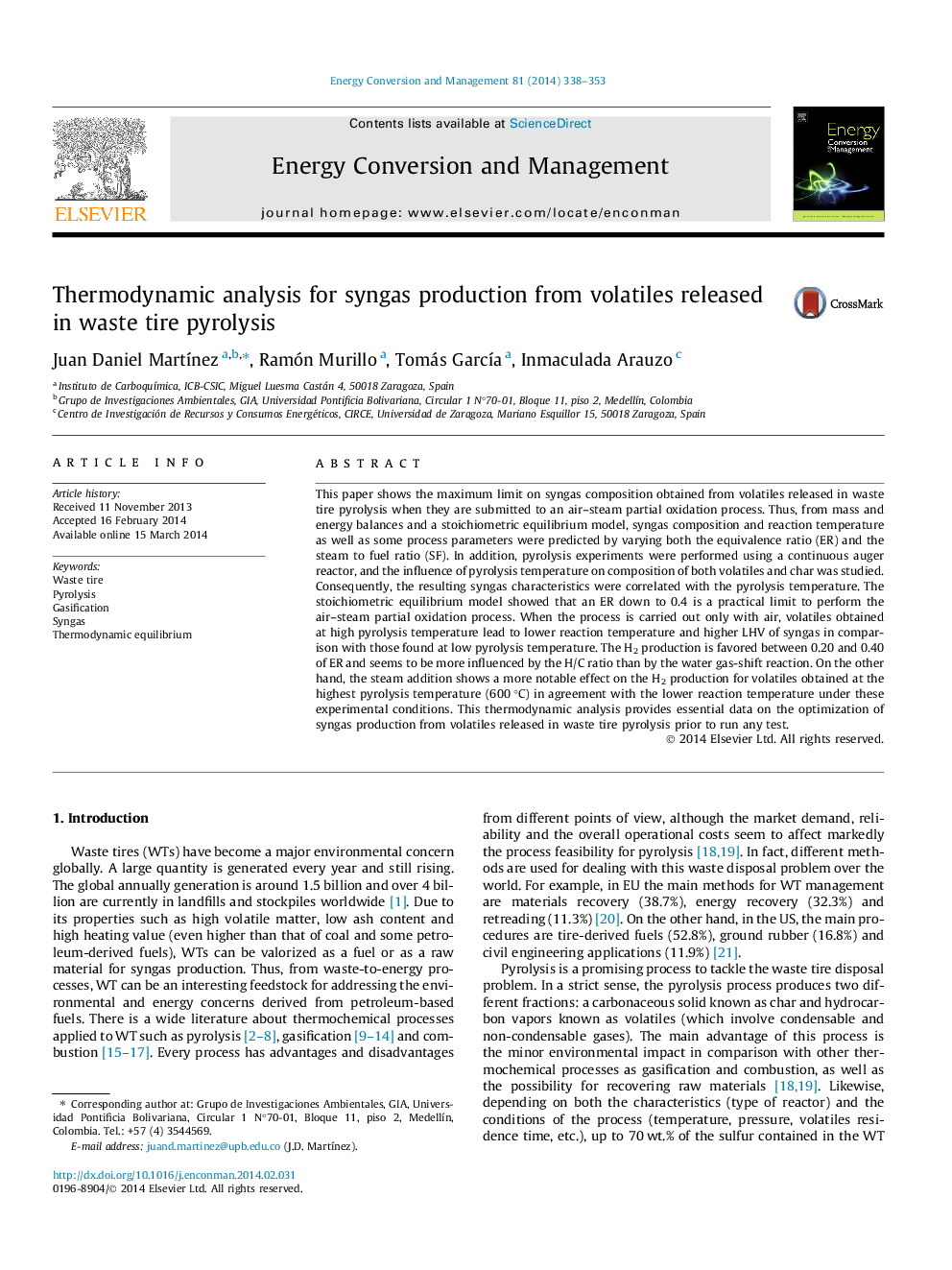| کد مقاله | کد نشریه | سال انتشار | مقاله انگلیسی | نسخه تمام متن |
|---|---|---|---|---|
| 763997 | 1462881 | 2014 | 16 صفحه PDF | دانلود رایگان |

• Pyrolysis experiments have been conducted in a continuous auger reactor.
• Pyrolysis temperature influence on composition of both volatiles and char was studied.
• A process for syngas production has been proposed from the volatiles.
• Equivalence ratio down to 0.4 is a practical limit for syngas production.
• The results provide essential data prior to perform any experimental campaign.
This paper shows the maximum limit on syngas composition obtained from volatiles released in waste tire pyrolysis when they are submitted to an air–steam partial oxidation process. Thus, from mass and energy balances and a stoichiometric equilibrium model, syngas composition and reaction temperature as well as some process parameters were predicted by varying both the equivalence ratio (ER) and the steam to fuel ratio (SF). In addition, pyrolysis experiments were performed using a continuous auger reactor, and the influence of pyrolysis temperature on composition of both volatiles and char was studied. Consequently, the resulting syngas characteristics were correlated with the pyrolysis temperature. The stoichiometric equilibrium model showed that an ER down to 0.4 is a practical limit to perform the air–steam partial oxidation process. When the process is carried out only with air, volatiles obtained at high pyrolysis temperature lead to lower reaction temperature and higher LHV of syngas in comparison with those found at low pyrolysis temperature. The H2 production is favored between 0.20 and 0.40 of ER and seems to be more influenced by the H/C ratio than by the water gas-shift reaction. On the other hand, the steam addition shows a more notable effect on the H2 production for volatiles obtained at the highest pyrolysis temperature (600 °C) in agreement with the lower reaction temperature under these experimental conditions. This thermodynamic analysis provides essential data on the optimization of syngas production from volatiles released in waste tire pyrolysis prior to run any test.
Journal: Energy Conversion and Management - Volume 81, May 2014, Pages 338–353